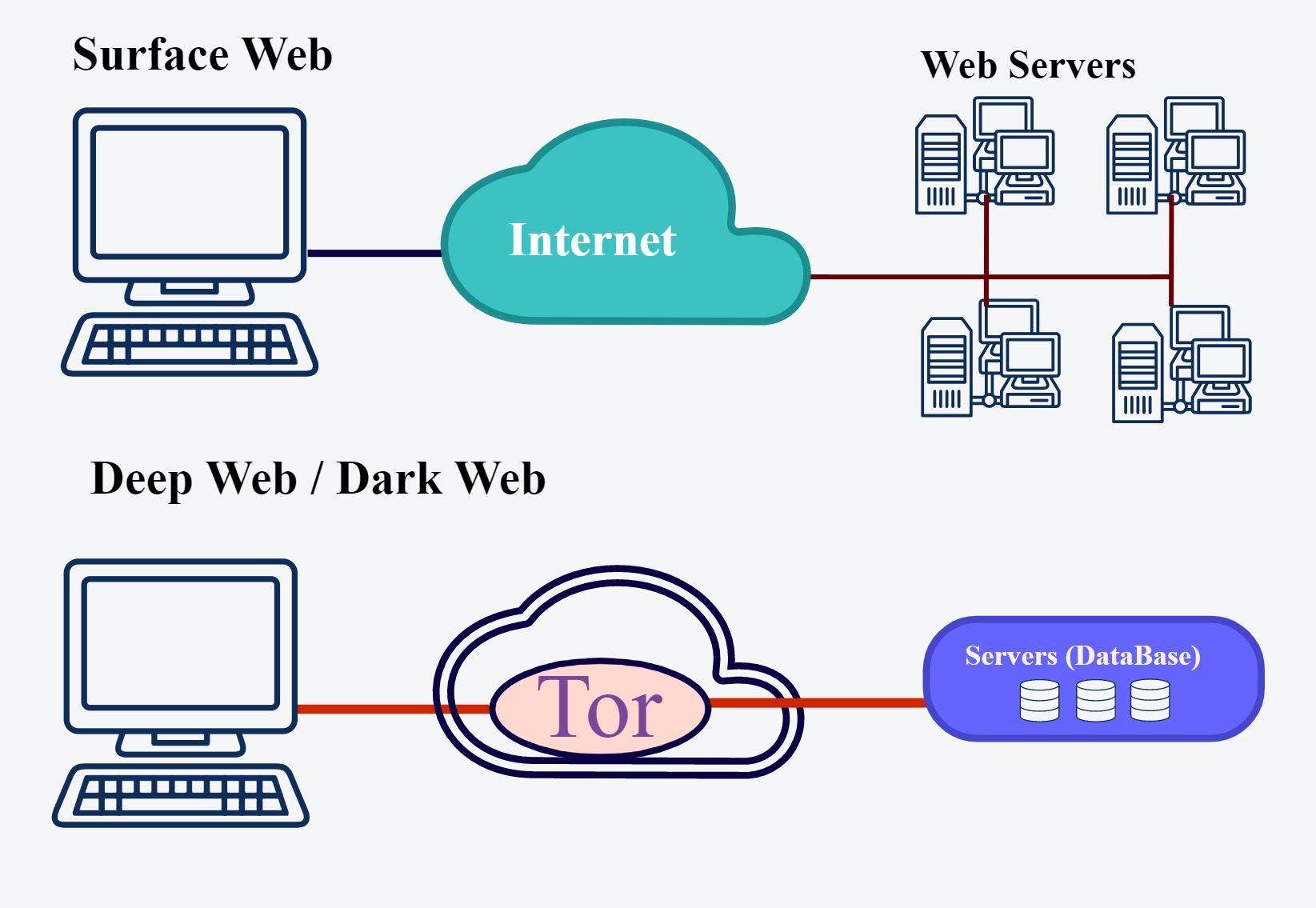We live in a digital world, right? Have you ever wondered how much you can learn just by stepping into this digital world? We will discuss in this post the roots of the digital world we inhabit and how it impacts our lives.
When we think of the web as an ocean, the surface web is the top to the ocean, which spreads for miles around, and is visible or “accessible”; the deep web is the part of the ocean below the surface and the dark web is the bottom, which can only be revealed by using specific technologies.
So let’s take a closer look at these three World Wide Web segments…
Surface Web vs Deep Web vs Dark Web
What is Surface Web?
The surface Web is just the internet we all know and care about. According to some researchers, the Surface Web is where we conduct day-to-day activities, including social networking and reading the news. In this case, conventional web spiders gather data from hyperlinked pages, letting you browse it via search engines like Google, Bing, or Yahoo.
There are several names for this type of system including Visible Web, Indexed Web, and Clearnet and it contains approximately 19 Terabytes of information.
Ironically, some Deep Web pages are located on the Surface Web. As a search engine cannot access content that requires credentials, these web pages are technically part of the Deep Web.
Although we think the surface web is a great system, there are a few drawbacks too. They include but are not limited to, trolls, stalkers, identity theft, distractions, hacking, pornography, violence, and intrusion of privacy.
Don’t forget that companies like Facebook and Google know about almost every aspect of your life because of the surface web.
What percentage of the Internet is Surface Web?
In total, the Surface Web contains only 10 percent of the Internet’s information. Basically, it consists of a collection of public pages on a server accessible via a search engine.
What is Deep Web?
People mistakenly believe that the deep web is a playground for criminals, drug users, terrorists, and sexual deviants. Even so, they’re not entirely wrong either. You must also keep in mind that, in some ways, an organization’s intranet is also a deep web, as no one outside the company can access the information on it.
Statistically, it is believed that the deep web consists of approximately 7500 Terabytes of information, 95% of which is publicly accessible.
Additionally, I would like to let you know that the deep web isn’t accessible via “normal” search engines. You need a special browser to use the Deep Web, for instance, TOR. It is the most popular option, but there are also alternatives such as GNUnut, Freenet, and Hotspot Shield. Furthermore, each of these also allows you to achieve some level of anonymity while browsing the web.
Surprisingly, there are websites available on the deep web that are not indexed by standard search engines, like Bing or Google. In order to view them, you need a deep web search engine like DeepPeep or IncyWincy.
It should be noted, however, that even though the deep web appears anonymous, some sites are watched by law enforcement and there is a good chance that you could be attacked by hackers as well. Therefore, you should be extra cautious when browsing the deep web.
The Deep Web contains content prohibited from public viewing and not indexed by search engines, such as your email and online banking information, and annually more than 100 billion dollars worth of illegal activity is conducted using the Deep Web worldwide.
What percentage of the Internet is the Deep Web?
According to most estimates, 90% of the entire internet can be found on the deep web, since the vast majority of articles online are protected and require authentication or knowledge of a hidden web address.
What is Dark Web?
There is often confusion regarding the dark web with the Deep Web, but to better understand it, consider it as the Deep Web’s evil twin and also called the Hidden Internet.
A Dark Web site is often described as merely a place in which users can work in solitude, be anonymous, and get information that is not otherwise available.
The Dark Web gives people the option of keeping their search habits completely private while still avoiding the intrusive marketing practices of companies such as Google or Facebook.
What percentage of the Internet is the Dark Web?
The dark web is basically a subset of the deep web which is deliberately hidden, requiring Tor to access. If you want to visit the dark web, you must use Tor. Although no one really knows how big the dark web is, most estimates place it around just 5% of the Internet.
Cybersecurity in all its facets
It’s fine for data to be buried deep, inaccessible to those who aren’t meant to see it. For example, a search indexing of corporate correspondence could lead to unfortunate consequences. So, it’s better to protect your account and documents so that only you can access them. But always follow some cautions, they are:
- Make sure your passwords are strong and unique. Keep track of your passwords with a password manager if there are too many accounts to remember.
- Always check you are exactly where you want to be before entering any of your credentials online. In case, if the URL appears to be a meaningless mess of letters and numbers, it is not trustworthy.
- Make sure that confidential documents are only accessible to those who actually need them.
- Unless you’re completely confident of the differences between forums for human rights activists and ones for hackers, avoid using the dark web.
- Keep yourself out of trouble with a trusted security solution






